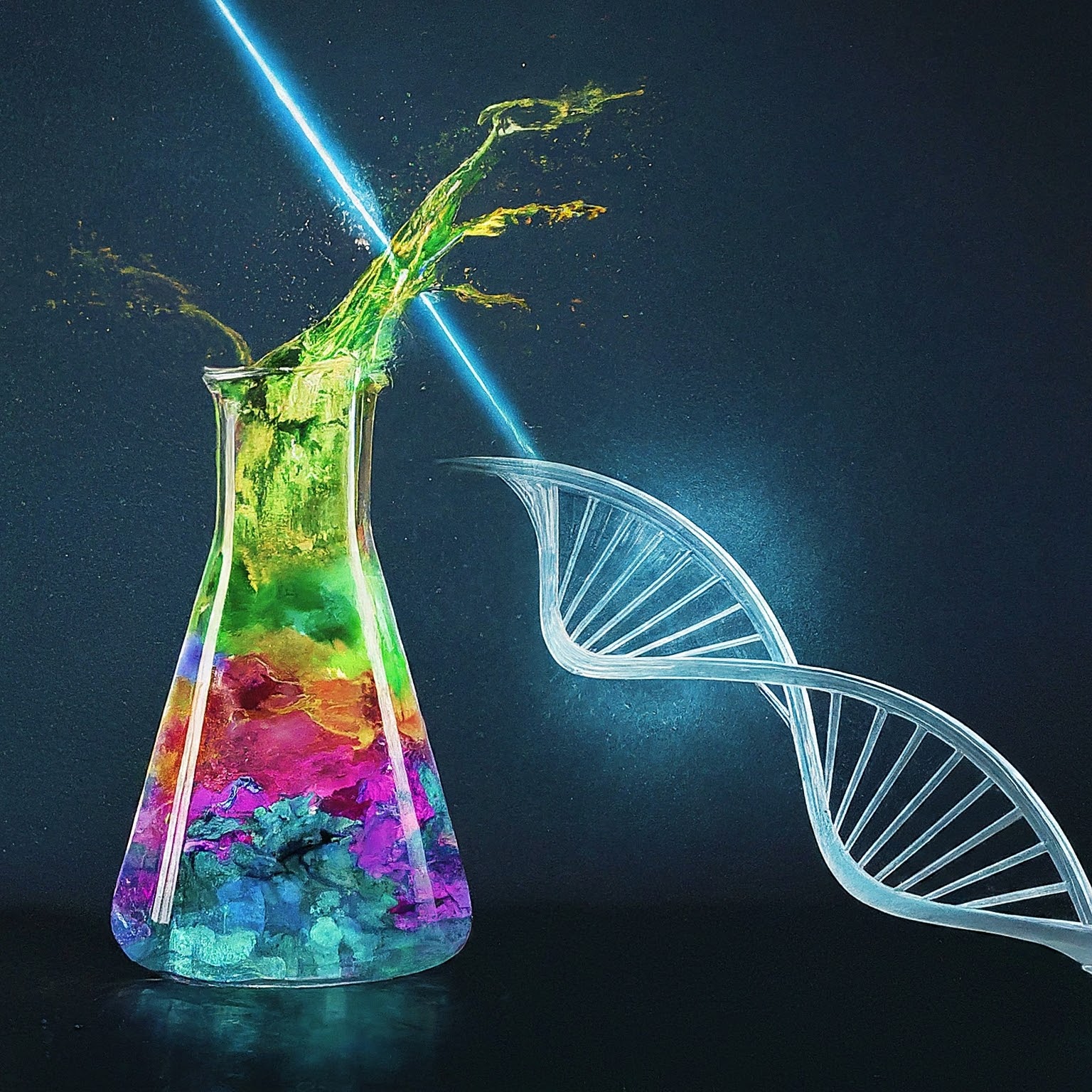300 Previous Year’s Science Questions Part -1
Studying 300 previous year’s science questions Part-1 is crucial for students preparing for upcoming exams due to several reasons. Firstly, it helps them understand the exam pattern, types of questions asked, and weightage given to different topics. Secondly, it allows them to identify important concepts and areas where they need to focus more.
Moreover, practicing these questions aids in improving time management and boosting confidence. Ultimately, it enhances their overall preparedness, ensuring better performance in the exams.

300 Previous Year’s Science Questions
- The author of the book “Systema Naturae” on salt is “Carolus Linnaeus”.
- “Alfalfa” is a type of grass.
- At a temperature of -400 there will be the same reading on both the Celsius and Fahrenheit scales.
- CFC is a ‘greenhouse gas’, which is responsible for ozone (O3) depletion.
- The correct method of DNA duplication is overdetermined.
- In RNA, instead of thymine (T), a pyrimidine base called uracil (U) is found.
- The sky appears black from space.
- Acetic acid is added to pickles for preservation.
- Uncontrolled mitosis causes cancer.
- Detergents form soluble salts of calcium and magnesium with hard water.
- Hygrometer is used to measure the required humidity.
- The modern concept of acids and bases was given by Lowry and Bronsted in 1923.
- Litmus paper, phenolphthalein and methyl orange are mainly used for identification of acids and bases.
- There is free hydrogen (H+) ion in the aqueous solution of acids which is responsible for the acidic properties of acids.
- Aristotle is called the father of Biology.
- In meiosis, the number of chromosomes in the daughter cells becomes half that of the parent cell.
- chromatids of homologous chromosomes from both the mother and father cross each other, one or more. During this, at the crossing places, the broken part of one chromatid joins the broken place of the other chromatid. This process is called crossing over. Through this, recombination takes place in the genes and new characteristics occur in the progeny. Are generated
- Eye color refers to the color of the iris.
- To measure the speed of an oncoming car, the traffic officer shines microwave rays on it.
- The internal energy of an ideal gas depends only on temperature.
- The basis of the modern periodic table is the atomic number.
- In Arthropoda, an external skeleton made of chitin-rich cuticle is found.
- Arthropoda phylum is the largest phylum in the animal kingdom.
- Potato is a tuber.
- Electrons are transferred in the process of charging.
- Benjamin Franklin was the first to use negative and positive poles for charges.
- A special water conveying canal system is found in Echinodermata animals.
- Echo sounding technique is used to measure the depth of the ocean.
- Ethylene is a colorless gas; smelling it causes unconsciousness.
- Tartaric acid is found in tamarind.
- The process of reverse transcription is the formation of DNA from DNA.
- The quality of excretory system is not found in plants.
- The word tissue was first used by Bichat.
- Heat is produced in an exothermic reaction.
- Antimony is an ore of the element stibnite.
- Endothelium is made up of squamous cells.
- Endoscope (instrument used to examine the internal abdomen) works on the principle of total internal reflection.
- For a ray incident on the mirror through the center of curvature of a concave mirror, the angle of incidence will be 00.
- If an ideal gas is compressed at a constant temperature, its internal energy will remain unchanged.
- One kilo calorie of heat is equal to 18 x 103 joules of work.
- When a burning matchstick comes in contact with hydrogen gas, it gets extinguished and the gas burns after making an ‘arc’ sound.
- A homogeneous mixture of more than one metal and non-metal is called alloy.
- The body temperature of a healthy human being is 40F.
- Ethane is an open chain compound.
- Embillaca officinaulis is the real name of opium.
- Multicellular and eukaryotic animals come under the kingdom Animalia.
- Octopuses are animals of the phylum Mollusca.
- The process of forming oxide is called oxidation.
- Histology is the study of tissues.
- The skeleton is mesoderm.
- Tendons connect muscle to bone.
- Ripening of raw fruit is a chemical change.
- Oxalic acid is used to remove ink and rust stains from clothes.
- Sometimes, due to frost in winter, the stems of plants burst because during frost, the water inside the stems freezes and turns into ice and the volume of ice is more than the volume of water.
- The cell wall of fungi is made of chitin.
- Chitin-rich external skeleton is found in insects.
- Paper is made from plant cellulose.
- Black skin is less affected by the sun’s ultraviolet rays.
- The centripetal force for a satellite to revolve around a planet comes from the planet’s gravitational force.
- The main properties of an organic compound depend on the functional group of the compound.
- By adding latent heat to a substance, its potential energy increases.
- The weight of any body is maximum at the poles of the Earth.
- Violet colored light ray is refracted the most when it passes through a prism.
- As the temperature of a medium increases, the speed of light in that medium will remain unchanged, while the speed of sound will increase.
- The redistribution of energy in waves moving in the same direction of the same frequency in a medium is called interference.
- Mach number is used to find the ratio of the speed of an object and the speed of sound in the same medium.
- Some bacteria like Rhizobium have Nif gene with the help of which these bacteria are capable of nitrogen fixation.
- Apart from the nucleus, DNA is found in mitochondria (chloroplast) and chloroplast.
- The boiling point of water on the Kelvin scale will be 373k.
- In Kelvin scale, normal temperature of human body is 310k.
- Green diesel is obtained from plants like Canola, Jatropha, Salifornia etc.
- Convex lens is used in camera. The power of convex lens is positive and the power of concave lens is negative.
- Carolus Linnaeus is called the father of taxonomy.
- Calorie meters are usually made of copper, because copper is a good conductor of heat and when water of any temperature is poured into it, it quickly spreads evenly throughout the calorie meter.
- The sour taste of Coca Cola is due to phosphoric acid.
- Cell membrane is a semi permeable membrane. It allows only some specific molecules to pass through it.
- Cell wall is present in plants but absent in animals.
- Plants of halophytes group grow well in alkaline soil.
- Benzoic acid is used in food preservation.
- Melting, evaporation, condensation, freezing, distillation, sublimation etc. are physical changes.
- Newton has mentioned the force of gravity in his book named ‘Principia’.
- Gasohol is a mixture of 90% unleaded petrol and 10% alcohol.
- The main function of Golgi body is to package the proteins, fats etc. synthesized by the cell.
- Golgi body is also called the traffic controller of cell molecules.
- Graphite is also used as a lubricant.
- The molecule of graphite element is a good conductor of electricity despite being covalently bonded.
- At home, vinegar is made by fermentation of starch.
- Ghee is acidic in nature and its pH value is around 5.
- Body cavity is not found in animals of flatworms, ciliates, porifera and protozoa classes.
- Bat is a flying mammal.
- Tannic acid is found in tea.
- Formic acid is found in ants.
- Animals that interbreed are all similar at the species level.
- Hydrochloric acid is found in gastric juice.
- When dust gets into the eyes, the conjunctiva swells and turns red.
- When sound waves travel, they carry mass with them.
- When salt is added to water, the boiling point increases and the freezing point decreases.
- When we hear sound, we can estimate its source by the intensity of the sound.
- There is no silver in German silver.
- The maximum density of water is 277 Kelvin.
- The volume elasticity coefficient of water is 7X10-5 per Kelvin.
- The transformation of water into vapor is a physical change.
- Hardness of water is removed by sodium carbonate and calcium hydroxide.
- Soda water made by passing carbon dioxide (CO2) in water is acidic in nature.
- An air bubble in water behaves like a concave lens.
- Getting hydrogen and oxygen when electricity is passed through water is a chemical change.
- Zinc metal reacts with acid and alkali to release hydrogen.
- Sound waves whose frequency is less than 20 (Hz) are called inaudible waves.
- Plants of gymnosperm class are naked seeds, that is, their seeds are new inside the fruits.
- The cells of bacteria and blue green algae are prokaryotic cells.
- Bacteria and blue algae belong to the kingdom Monera.
- Bacteriophages are viruses that infect bacteria.
- Radioactive isotopes of carbon are used to determine the age of fossils and dead plants (carbon dating).
- Nitrogen is found in living organisms in the form of proteins.
- Lobster, crayfish and silver fish are organisms of Arthropoda phylum.
- The body of plants of Pteridophyta class is divided into root, stem and leaf.
- Solid carbon dioxide (CO2) is called dry ice.
- There is a protective covering of epithelial tissue on solid internal organs like tongue, kidney, liver, spleen etc.
- The non-metal that conducts electric current in the solid state is graphite.
- W. M. Stanley has the credit for being the first to isolate the virus in crystal form.
- Some elements of d block do not follow Aufbau’s rule.
- DNA Polymerase enzyme is used in DNA synthesis from nucleotides.
- Fiber optics works on the principle of total internal reflection.
- Nerve fibers are not components of connective tissue.
- Copper metal is often used in making lightning conductors.
- Actinite group of elements is called radio active group.
- Copper is a metal which does not pollute the environment.
- As temperature increases, relative humidity (R.H) increases.
- Skin is also called “Jack of All Trades”.
- After injury the skin regenerates by vacuolated epithelium.
- Thermocouple thermometer works on the principle of Seebeck effect.
- The purpose of the thermostat is to keep the temperature constant.
- Thiokal rubber is a type of synthetic rubber.
- Thallophyta is also called “amphibian plant class”.
- Plants of Thallophyta class are mainly aquatic plants.
- Pulses have the ability to fix nitrogen.
- Lactic acid is found in milk.
- The formation of curd from milk is a chemical change.
- An object placed between two plane mirrors produces infinite images.
- The phenomenon of interference is not found in light waves emanating from two independent light sources.
- The law of conservation of mass was first propounded by Lomonosov.
- The father of binomial system is Carolus Linnaeus.
- The action of electrical conductors in metals is due to free electrons.
- Metallic bonds are found between the atoms of metallic solids.
- Sound travels in the form of longitudinal waves.
- Due to the quality of sound, we recognize our friends by listening to their voices.
- Diffraction of sound waves is the bending of sound from the edge of an obstacle and moving forward.
- There is no change in frequency when sound waves pass from one medium to another.
- Polarization does not occur in sound waves.
